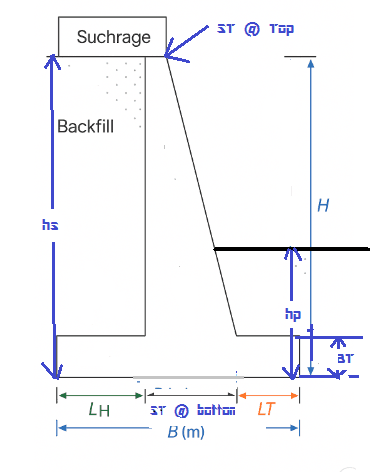Retaining walls are used to hold back soil or other materials when the ground surface is at different levels. These walls are common in construction, especially when making roads, buildings, or supporting land on slopes. One popular type of retaining wall is the RCC (Reinforced Cement Concrete) Cantilever Retaining Wall. This type of wall is strong, durable, and efficient in resisting the pressure of soil. It has a vertical stem free from top and a base slab that spreads the load to the ground. However, before using such a wall in a real project, we must make sure it is safe and stable through an RCC cantilever Retaining wall Stability check.
In this calculator, you will enter data such as the wall’s height, the height of active soil , the friction angle , bearing capacity, and assume sizes of stem, heel and toe. Once you fill the data and click the “Calculate Stability” button, the calculator will perform following stability checks:
- Sliding check
- Overturning check
- Eccentricity Limit
- Base Pressure check
It will show whether your wall is safe or unsafe . The aim is to make it easy for students, civil engineers, or anyone interested in construction to understand if their design is correct and safe.

RCC Cantilever Retaining Wall Stability Check
Notes:
- Passive Pressure is not considered.
- Design Checks are not included here.
- Fill Angle is considered as 0.

Leave a Reply